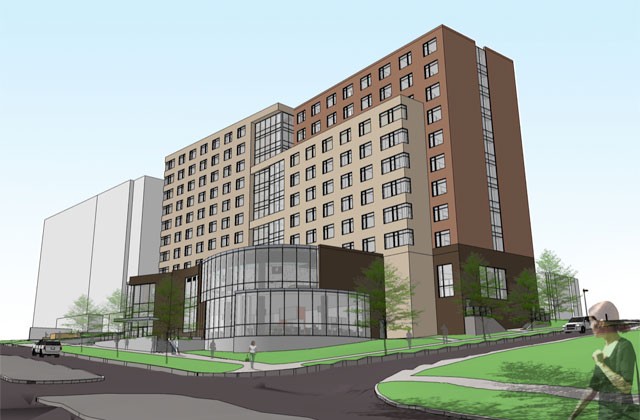We'd like your input - recent projects, photo/s, renderings, and expert insight - on an important article we're working on for our Jan 2013 issue:
HIGHER EDUCATION: Residence Halls, Student Unions, and ‘Quality of Life’ Factors in the Halls of Ivy
With total costs exceeding $50,000 at many colleges/universities, and with U.S. student debt nearing $1 trillion, will institutions be forced to cut back on "quality of campus life" buildings: residence halls that rival the Ritz, student unions and refectories that go well beyond the basics of bed and board, recreation centers that may seem over the top in their amenities? What about other "quality of campus life" buildings?
We're not talking about basic classroom, science & technology, or administrative buildings here. We're interested in those structures that are not, strictly speaking, essential to the curriculum or administration of the institution - those facilities that serve to enhance the "quality of campus life."
The essential question: Have colleges and universities gone too far with these structures? Or does competition for top students, institutional pride, or some other factor make it essential that institutions of higher learning keep raising the bar? And who's going to pay for these facilities?
Please send project information, PDFs, photo/s, renderings, and related information to our Contributing Editor, Susan Bady (susanbady@sbcglobal.net).
Please also let Susan know the name and contact info (email, phone, office location) of your top expert on higher-ed facilities.
Deadline: Due to the Thanksgiving holiday, we'd like to get these materials by Friday, Nov 16, if possible.
Thanks for your help, and BD+C looks forward to working with you on this important article. +
Related Stories
| Aug 11, 2010
ZweigWhite names its fastest-growing architecture, engineering, and environmental firms
Management consulting and research firm ZweigWhite has identified the 200 fastest-growing architecture, engineering, and environmental consulting firms in the U.S. and Canada for its annual ranking, The Zweig Letter Hot Firm List. This annual list features the design and environmental firms that have outperformed the economy and competitors to become industry leaders.
| Aug 11, 2010
SSOE, Fluor among nation's largest industrial building design firms
A ranking of the Top 75 Industrial Design Firms based on Building Design+Construction's 2009 Giants 300 survey. For more Giants 300 rankings, visit http://www.BDCnetwork.com/Giants
| Aug 11, 2010
Guggenheim to host live online discussion of Frank Lloyd Wright exhibition
The Solomon R. Guggenheim Museum launches the Guggenheim Forum, a new series of moderated online discussions among experts from a variety of fields that will occur in conjunction with major museum exhibitions.
| Aug 11, 2010
Best AEC Firms of 2011/12
Later this year, we will launch Best AEC Firms 2012. We’re looking for firms that create truly positive workplaces for their AEC professionals and support staff. Keep an eye on this page for entry information. +
| Aug 11, 2010
Report: Building codes and regulations impede progress toward uber-green buildings
The enthusiasm for super green Living Buildings continues unabated, but a key stumbling block to the growth of this highest level of green building performance is an existing set of codes and regulations. A new report by the Cascadia Region Green Building Council entitled "Code, Regulatory and Systemic Barriers Affecting Living Building Projects" presents a case for fundamental reassessment of building codes.
| Aug 11, 2010
Call for entries: Building enclosure design awards
The Boston Society of Architects and the Boston chapter of the Building Enclosure Council (BEC-Boston) have announced a High Performance Building award that will assess building enclosure innovation through the demonstrated design, construction, and operation of the building enclosure.
| Aug 11, 2010
Portland Cement Association offers blast resistant design guide for reinforced concrete structures
Developed for designers and engineers, "Blast Resistant Design Guide for Reinforced Concrete Structures" provides a practical treatment of the design of cast-in-place reinforced concrete structures to resist the effects of blast loads. It explains the principles of blast-resistant design, and how to determine the kind and degree of resistance a structure needs as well as how to specify the required materials and details.







